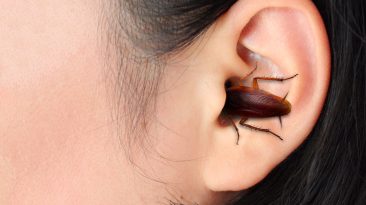Are you an organ donor? How much of you are you willing to part with?
Your heart and lungs? Skin and bones? Cornea? Genitalia? Why not just give away your entire body?
Yes, this neurosurgeon says he’s close to achieving the world’s first successful body transplant. Most doctors are calling this endeavor unethical, if not impossible…
But what if it is possible? What if you could replace any body part without any trouble? What if you could replace your whole body?
Since the very first successful organ transplant in 1954, the list of body parts that you can give to those in need has expanded significantly. Almost everything, from heart to hands, and eyes to intestines has been transferred from one body to another. In 2014, a mother made history by giving birth to the first live baby from a transplanted uterus!
It took decades of research and practice to be able to pull off such procedures, and even the ones that have become commonplace still face complications. But now, neurosurgeons Sergio Canavero and (SHAOW-PING – REN)Xiaoping Ren claim that they will soon transplant one patient’s head onto a new body.
Organ transplants have come a long way, but swapping heads and bodies seems closer to science fiction than anything like real medicine.
So how would it work? How much would it help you? Who would you even be?
In one operating room, a team of surgeons will prepare your host body, while in another room, a different team will be tasked with safely removing your head. There’s no room for mistakes with this procedure. Your head will be chilled at about 10ºC (50ºF) to minimize the risk of brain damage once blood stops circulating to your head. Your head will have to be drained of blood to prevent any clots from forming during the transition.
The biggest physical obstacle to a full body transplant will be connecting your head to a new spinal cord. At this point, no doctor has ever succeeded in reconnecting a completely severed spinal cord; and that’s because there are millions of nerve connections that would need to be fused together perfectly in order to restore full functionality.
To make the cleanest cut possible, surgeons will use a diamond-edged blade, which should be sharp enough to cut through the spinal cord without fraying any nerves. Once that’s done, the next step is to glue your head onto the new spinal cord using Polyethylene glycol, which is considered to be a fusogen, capable of rapidly re-fusing severed neurons.
But, so far, in animal tests, this part of the process has only restored functionality to about 15% of the nerves in the spinal cord. So you can see why almost every doctor who’s read up on this procedure doubts its success. And we haven’t even had an identity crisis yet.
Suppose your head gets a new body, what happens to you? We’ve been debating questions of identity and consciousness for centuries, and we’re nowhere near a consensus.
Is your identity attached to your mind? Or is it all of you?
Even if your brain stays the same, you’re going to have new DNA. If you decide to have children, your new body’s genes will be passed on, so are they really your descendants?
It’s likely that your personality would change too. Do you know about your second brain? Medically, it’s called your enteric nervous system, and it’s a bundle of nerves in your gut that gives you, well, those gut feelings. 95% of serotonin, which helps regulate your emotions, is housed in your gut. So with your brain upstairs, and someone else’s second brain down below, who would this hybrid person be?
But suppose you can stomach the existential confusion, can you really be sure that your new body will accept you? With any organ transplant, patients are prescribed a variety of drugs to prevent the immune system from rejecting foreign parts. So yeah, you’re going to have to hope your new body can get along with your head, but isn’t the idea of your body not wanting to be around you just a little bit psychologically traumatic?
Thankfully, these questions are nothing you need to worry about today. Organ transplantation still has it’s limits, but we keep pushing them. While a full body transplant might one day be possible, we’ve got other problems to solve on our way there. Meeting the current demand for organ donation is one step, successfully reconnecting the spine is another.
Subscribe to What-If on Youtube or follow the show on Facebook Watch.
Sources
- “A Human Head Transplant Would Be Reckless And Ghastly. It’S Time To Talk About It.”. Wolpe Root, Paul, 2018. Vox. Accessed December 22 2018.
- “The Falcon Heavy Just Aced A Major Pre-Launch Test”. Gohd, Chelsea, 2018. Futurism. Accessed December 22 2018.
- “Consent Form | Popular Science”. Felman, Rachel, 2018. Popsci.Com. Accessed December 22 2018.
- “THE DOCTOR’s WORLD; The Limits Of Transplantation: How Far Should Surgeons Go?”. M.d., Lawrence. 1989. nytimes.com. Accessed December 22 2018.
- “Organ Transplantation”. 2018. en.wikipedia.org. Accessed December 22 2018.
- “History | UNOS”. 2014. UNOS. Accessed December 22 2018.



























